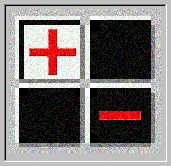
 |
Matrix of Change | |||||
| Introduction | Case study | Features | Publications | FAQ | Download | |
| Table of contents | Quick overview | Building the matrix | Interpreting the matrix |
|
Step 1a: Identify existing goals and processes Managers should first list their existing goals, business practices, and ways of creating value for consumers. Current practices are then broken into constituent processes suggesting how they are accomplished. Identifying the most important processes can be quite difficult, but certain guidelines can help. One guideline is to choose members of the redesign team both for their knowledge of functions essential to business objectives and their ability to secure support from these functions during subsequent phases. Also using many of the existing frameworks and methodologies for analyzing business practices is a key element to process identification. The Process Handbook from MIT (process.mit.edu) is one tool which is very complementary to the Matrix of Change, another would be various frameworks such as the 7S Framework, and others. For example, note that under "Existing Practices - Information Systems," UPS identified their tracking system and relational database as core IT assets. The full list for this analysis is given in the table below.
|
TOC | |||||||||||
| Prev | Next |
|||||||||||
| | | | | | | |